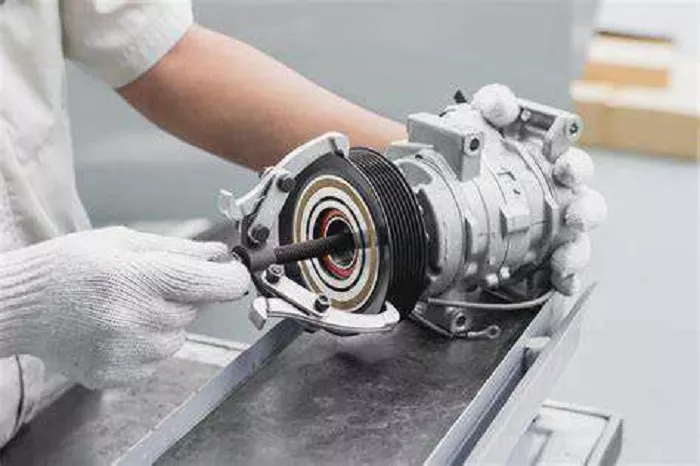The air conditioning (AC) system in a vehicle is essential for comfort, especially in extreme weather conditions. One of its critical components is the AC compressor, which circulates refrigerant to cool the cabin. The compressor clutch engages and disengages the compressor pulley, allowing the system to operate only when needed. When the clutch fails, the AC system stops working, leading to discomfort and potential overheating in some vehicles.
Understanding the AC Compressor Clutch
Function of the AC Compressor Clutch
The AC compressor clutch is an electromagnetic component that connects and disconnects the compressor from the engine’s pulley system. When the AC is turned on, the clutch engages, allowing the compressor to circulate refrigerant. When the AC is off, the clutch disengages to reduce engine load and improve fuel efficiency.
Symptoms of a Failing AC Compressor Clutch
Common signs of a failing clutch include:
- AC not blowing cold air: The clutch may not engage, preventing refrigerant circulation.
- Unusual noises (grinding, squealing):Worn bearings or a damaged clutch can cause loud sounds.
- Visible damage or burning smell: Overheating can cause physical damage to the clutch.
- Clutch not engaging: If the clutch remains disengaged, the compressor won’t function.
If these symptoms appear, a professional inspection is necessary to determine whether the clutch needs replacement.
Factors Affecting Replacement Costs
Vehicle Make and Model: Luxury and high-performance vehicles often have more expensive parts.
Type of Compressor Clutch: Some clutches are sold separately, while others come as part of a full compressor assembly.
Labor Costs: Mechanics charge different rates based on location and expertise.
Additional Repairs: If the compressor itself is damaged, a full replacement may be needed, increasing costs.
Breakdown of Replacement Costs
Labor Costs
- Independent Mechanics: 80–120 per hour
- Dealerships: 100–150 per hour
- Estimated Time: 1–3 hours (depending on accessibility)
Additional Costs
Refrigerant Recovery and Recharge: If the system is opened, refrigerant must be properly handled (100–200).
Compressor Replacement: If the compressor is damaged, replacement costs 400–1,000+.
Belt or Pulley Issues: Worn belts or misaligned pulleys may need replacement (20–150).
Total Estimated Cost
| Component | Cost Range |
|---|---|
| AC Compressor Clutch | 50–400 |
| Labor | 80–450 |
| Refrigerant Recharge | 100–200 (if needed) |
| Total Estimated Cost | 230–1,050+ |
DIY vs. Professional Replacement
Some car owners consider replacing the clutch themselves to save money. However, this job requires mechanical skill and special tools.
Pros of DIY Replacement
- Saves labor costs.
- Good for those with automotive experience.
Cons of DIY Replacement
- Requires specialized tools (clutch removal tool, torque wrench).
- Risk of improper installation leading to further damage.
- Handling refrigerant requires certification (EPA Section 609 in the U.S.).
When to Hire a Professional
- If you lack experience with AC systems.
- If refrigerant handling is required.
- If the compressor or other components are damaged.
How to Reduce Replacement Costs
Compare Quotes: Get estimates from multiple shops.
Use Aftermarket Parts: If budget is a concern, choose reputable aftermarket brands.
Check Warranties: Some parts come with warranties that can save money on future repairs.
Preventative Maintenance: Regular AC inspections can prevent clutch failure.
Conclusion
Replacing an AC compressor clutch typically costs between 230and1,050, depending on parts, labor, and additional repairs. Vehicle owners should weigh the pros and cons of DIY repairs versus professional service. Proper maintenance can extend the life of the clutch and prevent costly repairs. By understanding these factors, drivers can make informed decisions and ensure their AC system remains functional for years to come.

